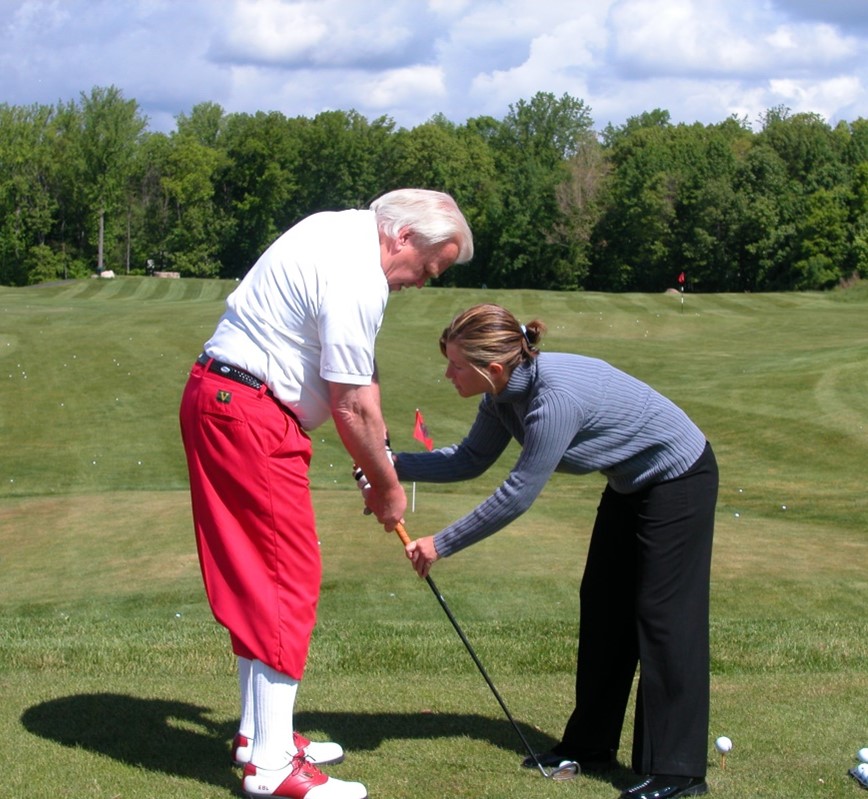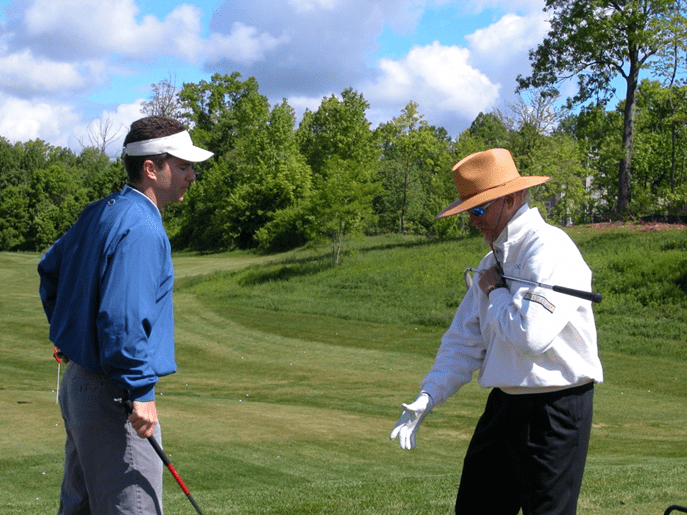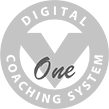The Four Pillars of Golf: Foundations of Golf

By Dr. T. J. Tomasi, Keiser University College of Golf Senior Faculty and Director of Research
Many believe that people can’t change – that once you reach adulthood, your personality is pretty much set. When things go wrong, this belief can lead to a shrug of the shoulders – “What can you do?” or it’s just “Manny being Manny” or “Britney being Britney.” This implies that intervention is hopeless – a mature personality, or golf game, “is what it is.”
I hear a version of this every week or so when I talk to golfers – and the older the golfer, the more resigned they sound. “Can’t teach an old dog new tricks” is what they believe, and my message to them is that when you’re having trouble with your game, don’t just accept it – be proactive – intervene; do something that helps you make changes that improve your game.
The Intervention Plan
In my world, I start with helping the student make an intervention plan – the centerpiece of which is to concentrate effort on the four essential areas I call the Four Pillars of Golf. They are (1) swing mechanics, (2) equipment, (3) mental management, and (4) physical fitness. The Four Pillars are the vehicles to maximize your potential by making you the best you can be in each area. If you can do that, you will bring the best “you” to your golf game, and that’s all anyone can ask.
To do anything well, you need to assemble your resources, i.e., the skills, concepts, mental programs, habits, and attitudes that make peak performance possible – I call this process of assembly “going to see the Wizard,” the centerpiece of which involves a journey of self-acquisition. Once you have identified the skills you’ll need, you must choose how they are acquired, i.e., it is not enough to know what they are; you must know how to make them part of you. A good teacher is very helpful in finding and incorporating the Four Pillars.
The Four Pillars of Golf
Golf performance relies on four key pillars: swing mechanics, equipment, mental management, and physical fitness. 1 – Swing mechanics, including grip, stance, posture, and ball position. 2 – Equipment refers to the clubs, balls, and gear that can be optimized for a golfer’s skill level. 3 – Mental management encompasses focus, emotional control, and strategy. 4 – Physical fitness, including flexibility, strength, and endurance, supports the swing and prevents injury. All four pillars are interconnected and crucial for a golfer to reach their full potential.
Swing Mechanics
Swing mechanics are the golfer’s technique for striking the ball, covering setup, backswing, downswing, impact, and follow-through. The aim is a repeatable, efficient motion that generates consistent, powerful, and accurate shots. Key elements include balance, proper weight shift, and coordinated body rotation (hips, torso, shoulders) to create clubhead speed. While styles vary, effective mechanics share traits like a stable base and smooth tempo.
- Individualization: Fundamental principles exist; the ideal swing is specific to each person’s body type, strengths, and limitations.
- Consistency over Power: Focus on creating a repeatable swing rather than maximizing power.
- Professional Guidance: Consider working with a qualified golf instructor for personalized feedback and drills.
Equipment
Golf equipment significantly influences performance, extending beyond clubs to balls, shoes, and apparel. Properly fitted clubs—considering shaft flex, length, lie angle, and grip—are crucial for optimizing a player’s swing and achieving the desired ball flight. The right golf ball can affect spin, distance, and feel. Appropriate golf shoes offer stability and traction for a balanced swing.
- Club Fitting: Getting clubs fitted to your swing characteristics is vital for distance, accuracy, and feel.
- Regular Check-Ups: Periodically evaluate your equipment as your swing and game evolve.
- Don’t Overlook the Ball: Choose a golf ball that suits your playing style and preferences.
Mental Management
Mental management, or the “mental game,” involves controlling thoughts, emotions, and focus to perform optimally, especially under pressure. Emotional control helps golfers recover from poor shots, preventing a domino effect. Confidence, built through practice and positive self-talk, allows for assertive decision-making and trust in one’s abilities.
- Focus on Process, Not Outcome: Concentrate on your pre-shot routine and execution rather than dwelling on past shots.
- Positive Self-Talk: Challenge negative thoughts with positive affirmations.
- Stay Present: Avoid letting past mistakes or worries about the next shot distract you.
- Acceptance and Resilience: Accept bad shots as part of the game and quickly recover from them.
Physical Fitness
Physical fitness is crucial for a powerful, consistent golf swing, injury prevention, and sustained performance. Key attributes include core strength for rotational power and stability; flexibility in the hips, shoulders, and spine for a full range of motion and increased clubhead speed; and balance for control. Endurance is also important for maintaining physical and mental sharpness throughout a round. Golf-specific training often targets these areas with exercises mimicking swing movements.
- Golf-Specific Training: Focus on exercises that improve core strength, flexibility, and rotational power.
- Warm-Up and Cool-Down: Proper warm-up and cool-down routines to prevent injuries and improve performance.
- Nutrition and Hydration: Proper nutrition and hydration are important for maintaining energy levels and concentration.
Other Pillars in Golf: Expectation Management, Strategy, Practice, and Mental Game
Beyond the fundamental swing mechanics, several crucial pillars significantly influence a golfer’s performance and overall enjoyment of the game. These additional golf pillars encompass the often-overlooked art of expectation management, strategy, practice, and the mental game of golf. Mastering these interconnected elements elevates a golfer’s game to new heights.
Expectation Management
Managing expectations in golf is important for maintaining motivation and concentration. Unrealistic aspirations can lead to frustration and hinder progress. Embracing the inherent variability of the game and accepting that bad shots and challenging rounds are inevitable is crucial. Setting achievable short-term goals, celebrating small victories, and focusing on personal progress rather than solely comparing oneself to others cultivates a healthier and more productive mindset on the course.
Strategy
Effective strategy in golf extends far beyond simply hitting the ball as far as possible. Strategic golfers analyze each hole, identifying the safest and most advantageous routes, even if it means sacrificing some distance. Laying up strategically to avoid trouble or to set up a comfortable approach shot demonstrates a higher level of game awareness.
Practice
Purposeful practice is the cornerstone of improvement in golf. Simply hitting numerous balls without a clear objective yields limited results. Varying practice conditions, such as hitting from uneven lies or practicing different types of shots, enhance adaptability. Incorporating short-game practice, including putting, chipping, and pitching, is crucial, as these shots often account for a significant portion of the score. Regular feedback, whether self-assessment or from a coach, helps identify areas for refinement. A well-structured practice plan balances technical work with on-course simulation, ensuring that improvements on the driving range translate to better performance on the golf course.
Mental Game
The mental game in golf encompasses a player’s ability to manage their thoughts, emotions, and focus throughout a round. Developing a pre-shot routine helps create a consistent mental and physical state before each shot. A strong mental game allows golfers to perform closer to their potential, even when faced with adversity, ultimately leading to more consistent and enjoyable rounds.
Integrating the Core Pillars of Golf
Integrating the pillars of golf, from swing mechanics to the mental game, is not about compartmentalization but rather about weaving these pillars together into a cohesive game. For instance, a well-practiced swing (swing mechanics) becomes more effective when coupled with smart course management (strategy) and realistic scoring goals (expectation management). Similarly, a solid short game and putting technique (strategy) is amplified by a focused and resilient mindset (mental game).
Actively reflect on each pillar after rounds and practice sessions, identifying areas of strength and weakness. Design practice routines that specifically address their integration, such as practicing pressure putts to simulate on-course tension (practice and mental game).
Takeaway: You need an improvement plan, and I suggest The Four Pillars. It covers the “WHAT” you should know. Once the resources are in your arsenal, you must use them to play the game – this is where your focus moves from the practice range and hitting golf shots to the golf course and playing golf. The skills to hit the golf ball are called swing mechanics, but as outlined above, the swing is only the first Pillar; the other three will be clarified in subsequent articles.
 A vital part of the first pillar (swing mechanics) is a good grip.
A vital part of the first pillar (swing mechanics) is a good grip.

A good drill that unlocks the proper shoulder action.
Learn more!
Want more tips? If you want to take your game to the next level, contact our team at Keiser University’s College of Golf & Sport Management today. With our dedication and experience, we can elevate your game to new heights together. Give us a call today at 888-355-4465.














